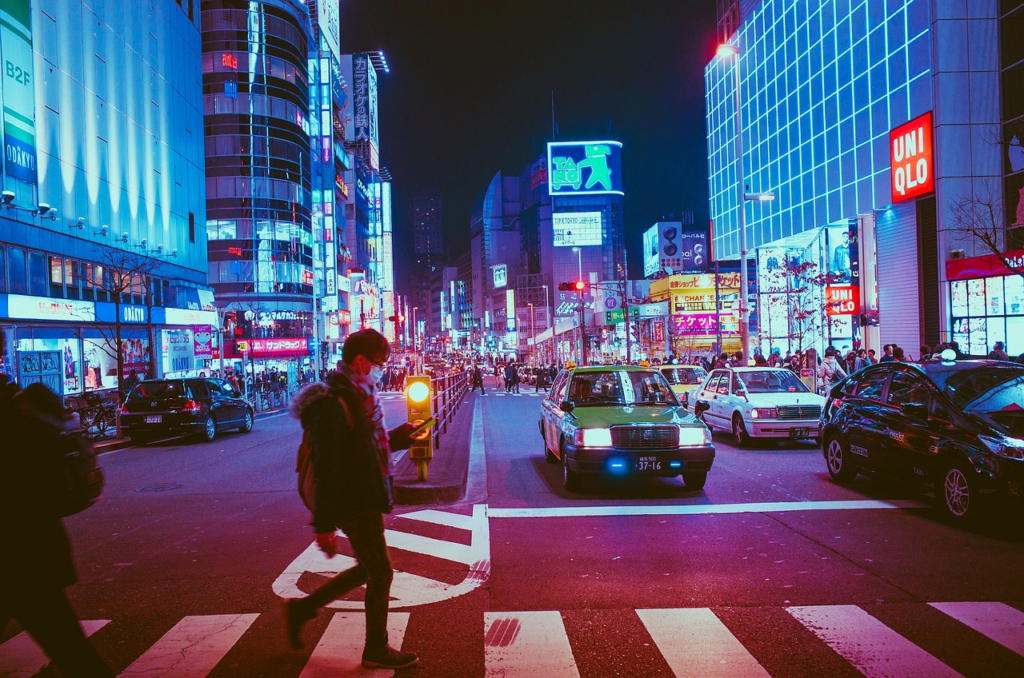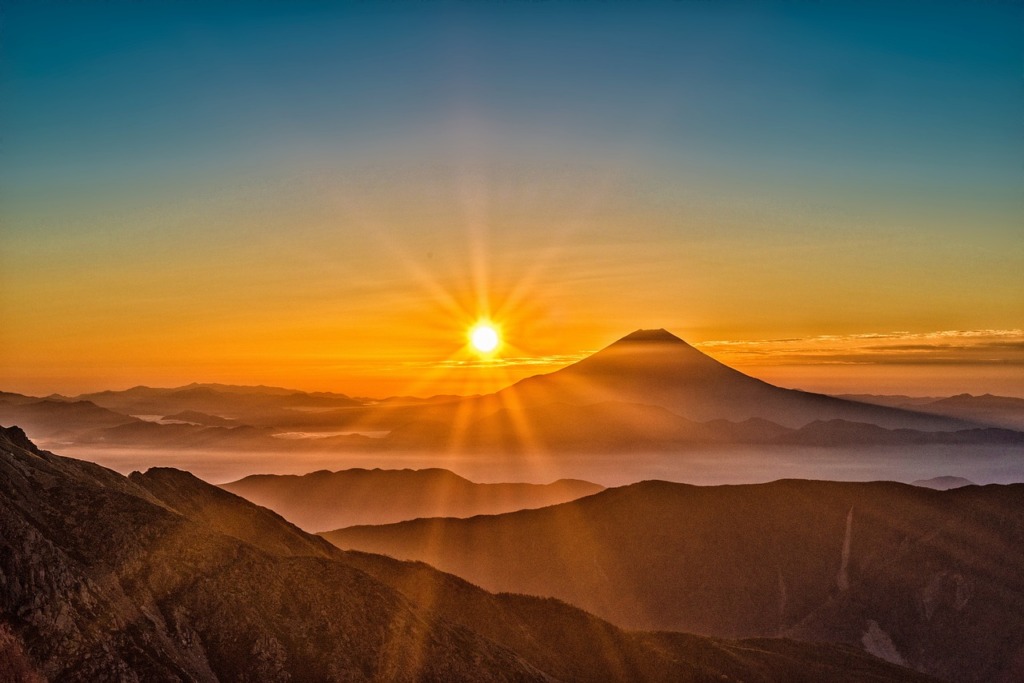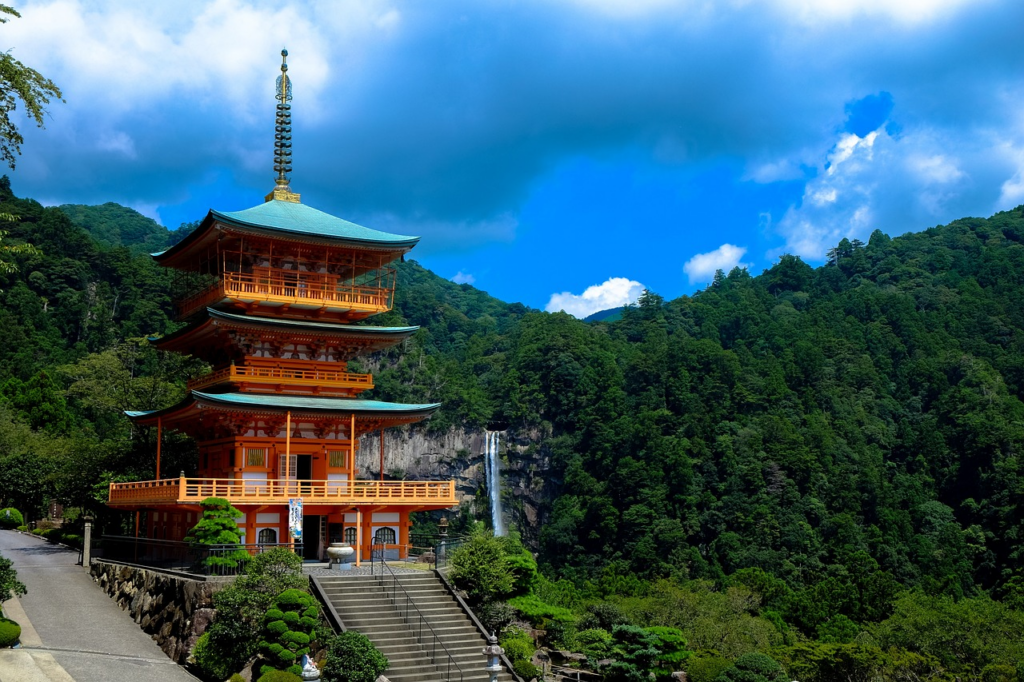Japan is a land of contrasts, where ancient tradition meets cutting-edge technology, and the serenity of ancient temples contrasts with the hustle and bustle of modern cities. With a rich history, delicious cuisine and stunning landscapes ranging from snow-capped mountains to tropical beaches, Japan is a destination that attracts travelers from all over the world.
When is the best time to go to Japan?
Japan is a destination that captivates travelers from all over the world with its unique blend of tradition and modernity. From the serenity of ancient temples to the hustle and bustle of ultra-modern cities, there is something for everyone in this island country. But when is the best time to visit Japan?
Spring
Spring is a stunning time to visit Japan, especially because of the cherry blossom phenomenon, known as "sakura". Between March and April, cherry blossoms bloom all over the country, creating a breathtaking landscape. Hanami, or the tradition of cherry blossom viewing, is a popular activity during this time. In addition, the climate is mild and pleasant, making it ideal for exploring the cities and nature.
Summer
The Japanese summer can be hot and humid, but it's also a lively time, with colorful festivals and cultural events all over the country. The famous Gion Matsuri festival in Kyoto, for example, takes place in July and is an unmissable celebration of Japanese culture. In addition, summer is the season for fireworks festivals, known as "hanabi", which light up the night sky with vibrant colors.
Autumn
Autumn in Japan is a season of dazzling colors, with the leaves on the trees changing to shades of red, orange and yellow. The phenomenon known as "koyo" attracts visitors from all over the world to witness the beauty of Japan's landscapes. October and November are the best months to enjoy the fall leaves, as the weather remains pleasant and the crowds are less intense than in spring.

Winter
Although winter is the coldest season in Japan, it also offers unique opportunities for travelers. Mountainous regions such as Hokkaido and the Japanese Alps are popular destinations for skiing and snowboarding. In addition, winter is the time for illumination festivals, where temples and gardens are decorated with millions of lights, creating a magical atmosphere.
Places to visit in Japan
Japan is a country full of fascinating places to explore, from vibrant metropolises to picturesque villages and stunning natural landscapes.
Tokyo
Tokyo, the capital of Japan, is one of the most vibrant and exciting cities in the world. With a unique blend of tradition and modernity, Tokyo offers a truly captivating experience for visitors. Here are some of the features that make Tokyo such a special destination:
- Culture and Tradition: Despite being a modern metropolis, Tokyo still preserves many aspects of Japanese culture and tradition. Just visit neighborhoods like Asakusa, where the Senso-ji Temple, the oldest in Tokyo, attracts millions of visitors every year. In addition, neighborhoods like Shibuya and Shinjuku offer a fascinating mix of modernity and tradition, with ancient temples coexisting with gleaming skyscrapers.
- Gastronomy: Tokyo is a paradise for food lovers. From traditional sushi and sashimi to ramen, tempura, okonomiyaki and much more, the city offers an endless variety of culinary options. Be sure to try the food markets such as Tsukiji Market, where you can taste some of the best fresh fish and seafood in the world.
- Shopping: Tokyo is a shopper's paradise, with a plethora of stores selling everything from the latest electronics to designer clothes and traditional souvenirs. The Ginza, Shibuya and Harajuku districts are known for their luxury department stores, exclusive boutiques and unique street stores.
- Nightlife: When the sun goes down, Tokyo comes alive with a lively and diverse nightlife. From local bars and izakayas (Japanese bars) to sophisticated nightclubs, there is something for everyone. The Roppongi neighborhood is known for its international nightlife scene, while Shibuya and Shinjuku offer a plethora of options for those looking for fun after dark.
Kyoto
Kyoto is a Japanese city of great historical, cultural and spiritual importance. The former capital of Japan for over a thousand years, Kyoto is a treasure trove of temples, shrines, gardens and palaces that preserve the country's rich cultural heritage. Here are some of the things that make Kyoto such a special destination:
- Cultural Heritage: Kyoto is home to around 2,000 temples and shrines, many of which are UNESCO World Heritage Sites. Highlights include the famous Kinkaku-ji Temple (Golden Pavilion), with its impressive pavilion covered in gold; Ginkaku-ji Temple (Silver Pavilion), known for its elegant architecture and meticulously tended gardens; and Fushimi Inari Temple, famous for its thousands of red torii that form an impressive corridor.
- Traditional Culture: Kyoto is one of the last strongholds of traditional Japanese culture. Historic districts such as Gion and Higashiyama transport visitors back in time, with their cobbled streets, traditional teahouses (called "ochaya") and the occasional presence of geishas and maikos, traditional Japanese artists. In addition, the city is famous for its tea ceremonies, ikebana (flower arranging) and kaiseki (multi-course meals).
- Cultural events: Kyoto hosts various cultural events throughout the year. One of the most famous is the Gion Matsuri Festival, which takes place in July and is considered one of the biggest festivals in Japan. During the festival, huge floats are carried through the streets of Kyoto in colorful parades, accompanied by traditional music and dance.
- Stunning Nature: Despite being a historic city, Kyoto is also blessed with stunning natural beauty. Maruyama Park, for example, is a green oasis in the heart of the city, with its cherry blossoms in spring and stunning fall leaves in autumn. In addition, Kyoto's surroundings offer opportunities for hiking and nature walks, including the mountainous region of Arashiyama, with its famous bamboo forest and panoramic views.
Hiroshima and Miyajima
Hiroshima is known worldwide as the site of the first nuclear attack in history. Visit the Hiroshima Peace Memorial Park and the Peace Memorial Museum to learn about the history and pay tribute to the victims. From there, take a ferry ride to the sacred island of Miyajima, famous for its floating torii and Itsukushima Temple.
- History and Peace Memorial: Hiroshima is sadly known as the site where an atomic bomb was dropped during World War II, on August 6, 1945. Today, the city is a symbol of peace and reconciliation, with the Hiroshima Peace Memorial Park at its heart. The park houses the Peace Memorial, the Atomic Bomb Victims' Cenotaph and the Hiroshima Peace Memorial Museum, which offers a moving and educational insight into the events of that fateful day.
- Culture and Gastronomy: Despite its painful history, Hiroshima is a vibrant city with a lot to offer visitors. The city is known for its unique cuisine, including Hiroshima's famous okonomiyaki, a kind of Japanese pancake prepared with several layered ingredients. In addition, Hiroshima has a lively cultural scene, with seasonal festivals, local markets and a variety of museums and art galleries.
- Miyajima Island: Located a short ferry ride from Hiroshima, Miyajima Island is a must-see destination for visitors to the region. Also known as Itsukushima, the island is famous for its floating torii, which seem to hover over the waters of the bay during high tide. In addition, Miyajima is home to the Itsukushima Temple, classified as a UNESCO World Heritage Site, and offers beautiful hiking trails, panoramic views and encounters with friendly deer that roam freely around the island.
Nara
Nara, located in the Kansai region, is a historic and culturally rich city, known for being the capital of Japan before Kyoto. Filled with ancient temples, stunning parks and a tranquil atmosphere, Nara offers visitors a unique experience. Let's explore more about what makes Nara so special:
- Temples and Shrines: Nara is home to some of Japan's oldest and most impressive temples and shrines. Todai-ji Temple is the most famous of these, known for housing the Great Buddha of Nara, a monumental bronze statue that is one of the largest in the world. Other notable temples include Horyu-ji Temple, a UNESCO World Heritage Site, and Kofuku-ji Temple, with its iconic five-storey pagoda.
- Parks and Nature: Nara is home to Nara Park, a vast park where visitors can interact closely with the friendly and docile sika deer that roam freely. Deer are considered messengers of the gods in the Shinto religion and are protected as Japan's national treasures. In addition, the park offers a serene atmosphere and is a popular spot for picnics and walks.
- Art and Architecture: The city of Nara is a true architectural gem, with many examples of well-preserved ancient art and architecture. The Kasuga District, for example, is known for its stone and bronze lanterns that lead visitors to the Kasuga-taisha Shrine, an important Shinto shrine. The shrine's corridors are decorated with thousands of lanterns that create a magical atmosphere, especially during seasonal festivals.
- Traditional Culture: Nara also offers visitors the chance to experience traditional Japanese culture in its most authentic form. At Todai-ji Temple, visitors can take part in Buddhist ceremonies, while at Kasuga-taisha Shrine, they can witness traditional dance and music performances during festivals. In addition, the city is home to several museums and art galleries exhibiting historical artifacts and works of art.
Osaka
Osaka, Japan's third largest city, is a dynamic and vibrant metropolis known for its delicious food, lively nightlife and unique culture. Here are some of the things that make Osaka such a captivating destination:
- Cuisine: Osaka is widely regarded as the "Kitchen of Japan", and for good reason. The city is famous for its culinary specialties, such as takoyaki (octopus dumplings), okonomiyaki (a kind of Japanese pancake) and kitsune udon (fried tofu noodles). Dotonbori is the gastronomic heart of Osaka, where visitors can taste a variety of delicious dishes while strolling through the neon-lit streets.
- Nightlife: Osaka comes alive after dark with a lively and diverse nightlife. Bars, izakayas (Japanese bars), clubs and karaoke are everywhere, especially in the Dotonbori, Shinsaibashi and Namba districts. The Dotonbori area is especially famous for its colorful lights, bright signs and continuous animation.
- Culture and History: Despite being a modern city, Osaka has a rich history and a vibrant culture. Osaka Castle is an important historical landmark, offering visitors an insight into the history of feudal Japan. In addition, neighborhoods such as Shinsekai and Tennoji preserve the nostalgic atmosphere of decades gone by, with narrow streets, traditional restaurants and local markets.

Mount Fuji
This national icon of Japan is a must for nature lovers. You can admire Mount Fuji from various vantage points, hike around the mountain or even climb to its summit during the summer climbing season.
Hokkaido
Japan's northernmost island is famous for its unspoiled natural beauty, including national parks, hot springs, lavender fields and world-renowned ski resorts.
Nagasaki
Another city marked by history, Nagasaki is known for its European influence and for being the site of the second nuclear attack during the Second World War. Visit the Nagasaki Atomic Bomb Museum and the Urakami Church, rebuilt after the devastation of the bomb.
These are just a few of the many incredible places to visit in Japan. Each region of the country offers its own distinct beauty and culture, ensuring that there is always something new and exciting to discover on every visit.
See also: How long does a round-the-world cruise take? See the duration
April 1st, 2024

She has a degree in Literature - Portuguese/English, and is the creator of the Escritora de Sucesso website. As a writer, she seeks to expand everyone's knowledge with relevant information on various subjects. At Trend-Topics, she brings news and content ranging from entertainment to the country's economic situation.






